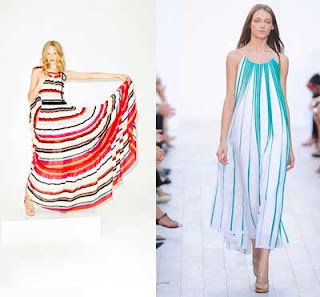Acum ceva timp intr-un post despre cosmetica asiatica va vorbeam despre
BB Creams si despre faptul ca m-am decis sa le incerc. In general opiniile despre aceste produse sunt foarte bune pentru ca nu au niciun efect nociv asupra teneului, ba din contra, il hidrateaza si trateaza anumite probleme gen pete, imperfectiuni, etc. Daca doriti sa cititi mai multe despre BB Creams in general click
aici.
Acum, dupa ceva timp de cand am inceput sa folosesc
Missha BB Cream Perfect Cover pot sa va spun ca imi pare rau ca nu am incercat-o mai demult. Am eliminat complet fondul de ten din rutina zilnica. Se aseaza minunat pe piele si adapteaza la nuanta tenului.
Am ales aceasta varianta a cremei (Perfect Cover) pentru ca are cea mai mare putere de acoperire si imi era teama ca celelalte variante nu imi vor acoperi suficient de bine petele, cicatricile si cosurile care mai apar.

In primul rand va spun ca este o crema hidratante de culoarea pielii dar care actioneaza ca un fond de ten in timp ce protejeaza piele. Are un factor de protectie foarte ridicat (42).
Exista 4 tonuri pe pagina
web Missha dar asa cum va spuneam lucrul acesta nu reprezinta o problema pentru ca dupa cateva minute de la aplicare culoarea se uniformizeaza si se adapteaza perfect pe piele. Nu mai este nevoie sa cautam nuanta perfecta a fondului de ten, o mare bataie de cap pentru majoritatea dintre noi. Eu am piele foarte alba si tenul gras cu unele probleme de acnee. Am ales culoarea N.21. Este recomandata pentru toate tipurile de piele si are proprietati anti-rid si actioneaza impotriva petelor.
Textura este intre o crema hidratanta si un fond de ten si o aplic cu degetele. Dupa aplicare o fixez cu o pudra transparenta. Dupa cateva minute lasa impresia ca nu ai nimic aplicat pe fata ci doar un ten sanatos.
Eu am cumparat varianta de 20 ml, exista si o varianta de 50 ml, probabil ca data viitoare o voi alege pe aceasta. Dar cel mai important lucru pentru mine este ca seara cand ajung acasa pielea este perfecta, parca as fi dormit 12 ore si tocmai ce ma ridicasem din pat. Este hidratata, luminoasa si fara niciun semn de oboseala, fara iritatii si fara cosuri.

Am cumparata pe ebay de la
Bello-Girl la
pretul de 9,99 dolari. Pe langa crema am primit si o mostra de la o alta bb cream de missha si un bilet de multumire foarte dragut scris de mana.
Ce parere aveti despre BB Creams, le-ati incercat?
PS: Adaug o imagine mai detaliata a etichetei si lista de ingrediente.


In continuare va las descrierea ingredientelor potrivit dictionarului de pe Paulas´s choice:
 cyclomethicone
cyclomethicone. Silicone with a drier finish than dimethicone.
√ ethylhexyl methoxycinnamate
ethylhexyl methoxycinnamate. Sunscreen agent used to protect skin primarily from the sun’s UVB rays
√ zinc oxide
zinc oxide. Inert earth mineral used as a thickening, whitening, lubricating, and sunscreen ingredient in cosmetics. Along with titanium dioxide, zinc oxide is considered to have no risk of skin irritation. It can also be an anti-irritant and potentially an antioxidant
 caprylic/capric triglyceride
caprylic/capric triglyceride. Extract derived from coconut and considered a good emollient and thickening agent in cosmetics
 mineral oil.
mineral oil. Clear, odorless oil derived from petroleum that is widely used in cosmetics because it rarely causes allergic reactions and it cannot become a solid and clog pores. Despite mineral oil’s association with petroleum and the hype that it is bad for or ages skin, keep in mind that petroleum is a natural ingredient derived from the earth and that once it becomes mineral oil USP (cosmetics- and pharmaceutical-grade mineral oil), it has no resemblance to the original petroleum.Cosmetics-grade mineral oil and petrolatum are considered the safest, most nonirritating moisturizing ingredients ever found
 phenyl trimethicone
phenyl trimethicone. Silicone with a drier finish than dimethicone.
 talc.
talc. Naturally occurring silicate mineral (any group of substances containing negative ions composed of silicon and oxygen) of magnesium. Current, extensive research indicates there is no increased risk of lung cancer when using talc-based products or for those involved in the manufacture of talc products
√ arbutin
arbutin. Hydroquinone derivative isolated from the leaves of the bearberry shrub, cranberry, blueberry, some mushrooms, and most types of pears. Because of arbutin’s hydroquinone content, it can have melanin-inhibiting properties. Although the research describing arbutin’s effectiveness is persuasive (even though most of the research has been performed on animals or in vitro), concentration protocols have not been established. That means we just don’t know how much arbutin it takes to have an effect in lightening the skin. Many cosmetics companies use plant extracts that contain arbutin, such as bearberry and mulberry leaf extract, but again, there is limited research, mostly animal studies or in vitro, showing that the arbutin-containing plant extracts used in skin-care products have any impact on skin
 hydrolyzed collagen.
hydrolyzed collagen. A form of animal or fish collagen that has been hydrolyzed, which is a chemical process involving the reaction of a substance with water to form a modified substance. Hydrolyzing collagen leaves a significant level of hydroxyproline, a modified amino acid that functions as a water-binding agent.
 dimethicone
dimethicone.Silicone
√ squalane.
squalane. Oil derived from shark liver or from plants (usually olives) and sebum. It is a natural component of skin and is a good emollient that has antioxidant and immune-stimulating properties
√ adenosine.
adenosine. Yeast-derived ingredient that plays an important cell-signaling role in many bodily processes. Adenosine is considered a good anti-inflammatory ingredient
 cetyl PEG/PPG-10/1-dimethicone
cetyl PEG/PPG-10/1-dimethicone. Silicone that functions as a skin-conditioning agent and emulsifier.
 polyethylene.
polyethylene. A form of plastic (synthetic polymer) that has numerous functions in cosmetic products. Rounded polyethylene beads serve as an abrasive agent in many facial scrubs. Also used as a stabilizer, binding agent, thickener, and film-forming agent. No known toxicity for skin
 beeswax
beeswax. Substance made by bees to build the walls of their honeycomb. It is a thickening agent that has some emollient properties.
√ glycerin.
glycerin. Also called glycerol or glycerine; it is present in all natural lipids (fats), whether animal or vegetable. It can be derived from natural substances by hydrolysis of fats and by fermentation of sugars. It can also be synthetically manufactured. Whether natural or synthetic, glycerin is a humectant and extremely hygroscopic, meaning it readily absorbs water from other sources. So, in part, glycerin works because of its ability to attract water from the environment and from the lower layers of skin (dermis) increasing the amount of water in the surface layers of skin. Another aspect of glycerin’s benefit is that it is a skin-identical ingredient, meaning it is a substance found naturally in skin. In that respect it is one of the many substances in skin that help maintain the outer barrier and prevent dryness or scaling.
 propylene glycol
propylene glycol. Along with other glycols and glycerol, this is a humectant or humidifying and delivery ingredient used in cosmetics. There are Web sites and spam e-mails stating that propylene glycol is really industrial antifreeze and that it is the major ingredient in brake and hydraulic fluids. These sites also state that tests show it is a strong skin irritant. They further point out that the Material Safety Data Sheet (MSDS) on propylene glycol warns users to avoid skin contact because systemically (in the body) it can cause liver abnormalities and kidney damage. As ominous as this sounds, it is so far from the reality of cosmetic formulations that almost none of it holds any water or poses real concern.
 algae extract
algae extract. Algae are very simple, chlorophyll-containing organisms in a family that includes more than 20,000 different known species. A number of species have been used for drugs, where they work as anticoagulants, antibiotics, antihypertensive agents, blood cholesterol reducers, dilatory agents, insecticides, and anti-tumorigenic agents. In cosmetics, algae act as thickening agents, water-binding agents, and antioxidants. Some algae are also potential skin irritants. For example, the phycocyanin present in blue-green algae has been suspected of allergenicity and of causing dermatitis on the basis of patch tests
 Rosa canina
Rosa canina. Good emollient oil that has antioxidant properties
√ Simmondsia chinensis.
Simmondsia chinensis. Emollient oil similar to other nonfragrant plant oils
 Fagus sylvatica extract
Fagus sylvatica extract. Antioxidant
√ ceramide 3.
ceramide 3. Naturally occurring skin lipids (fats) that are major structural components of the skin’s outer structure. Skin as a barrier system inhibits water movement via its extracellular matrix, which has a unique composition of 50% ceramides, 25% cholesterol, and 15% free fatty acid
 Rosmarinus officinalis extract.
Rosmarinus officinalis extract. Extract that can have antioxidant benefit for skin, but its aromatic components can cause irritation or sensitizing or toxic reactions on skin
√ Chamomilla recutita flower extract
Chamomilla recutita flower extract. The main constituents of the flowers include phenolic compounds, primarily the flavonoids apigenin, quercetin, patuletin, luteolin, and their glucosides. The principal components of the essential oil extracted from the flowers are the terpenoids α-bisabolol and its oxides and azulenes, including chamazulene. Chamomile has moderate antioxidant and antimicrobial activities, and significant anti-platelet activity in vitro
√ sodium hyaluronate.
sodium hyaluronate. The salt form of skin-idenrical ingredient hyaluronic acid
 sodium chloride.
sodium chloride. More popularly known as common table salt. Used primarily as a binding agent in skin-care products and occasionally as an abrasive in scrub products.
Cam acestea ar fi principalele ingrediente. Dupa cum vedeti decat unul singur este catalogat ca fiind nociv tenului.























































